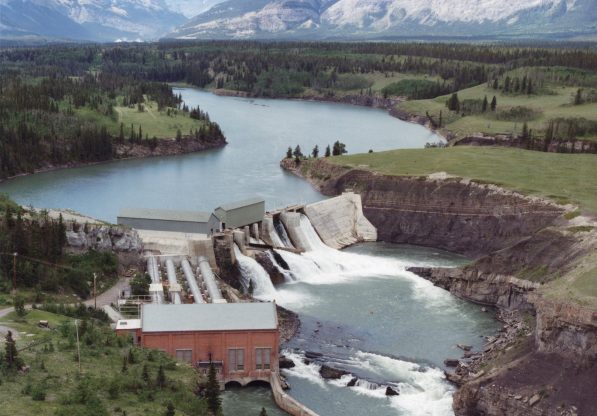
Horseshoe
Built in 1911, the Horseshoe Plant was TransAlta’s first power plant. It is one of four hydro plants on the Bow Mainstream System in Alberta, which is part of the Bow River Electric System.
The Horseshoe Plant is a run-of-the-river plant. That means it uses river water as it flows, with no reservoir for storage.
The Horseshoe plant generates an average of 84,000 megawatt hours each year.
Named after the Horseshoe Falls, the plant is located next to the Stoney Reserve. The Horseshoe Plant represents the beginning of TransAlta’s longstanding relationship with the Stoney people.
TransAlta’s hydroelectric plants primarily provide electricity during periods of peak electrical demand and ensure system stability. Their operating flexibility means they can start quickly to introduce hydro power within minutes, balancing out shortages due to unexpected outages, or providing power at times of high demand.
Environmental highlights
Protection of the environment is an important part of our hydro power business, as is responsible water use. We continually work with environmental and community groups to ensure habitats are protected, and that all users needs are heard.
Water license renewals
TransAlta is seeking to renew two water licences for the Kananaskis and Horseshoe Falls hydroelectric facilities issued under the Dominion Water Power Act of Canada. The previous renewal came into force on October 10, 1997. TransAlta is seeking to renew the licences for a 30-year period with no design changes currently being proposed at either facility.
In October 2024 the renewal applications were submitted to Crown Indigenous Relations and Northern Affairs Canada (CIRNAC) and included information such as:
- Facility History
- Facility Description
- Dam Safety
- Land Ownership
- Water Rental Agreements
- Environmental Compliance
- Public Engagement
TransAlta welcomes comments and questions about the Licence Renewal. Please contact the project team directly by email at hydrorenewals@maskwaenv.com or by phone at 1(888) 893-4980

